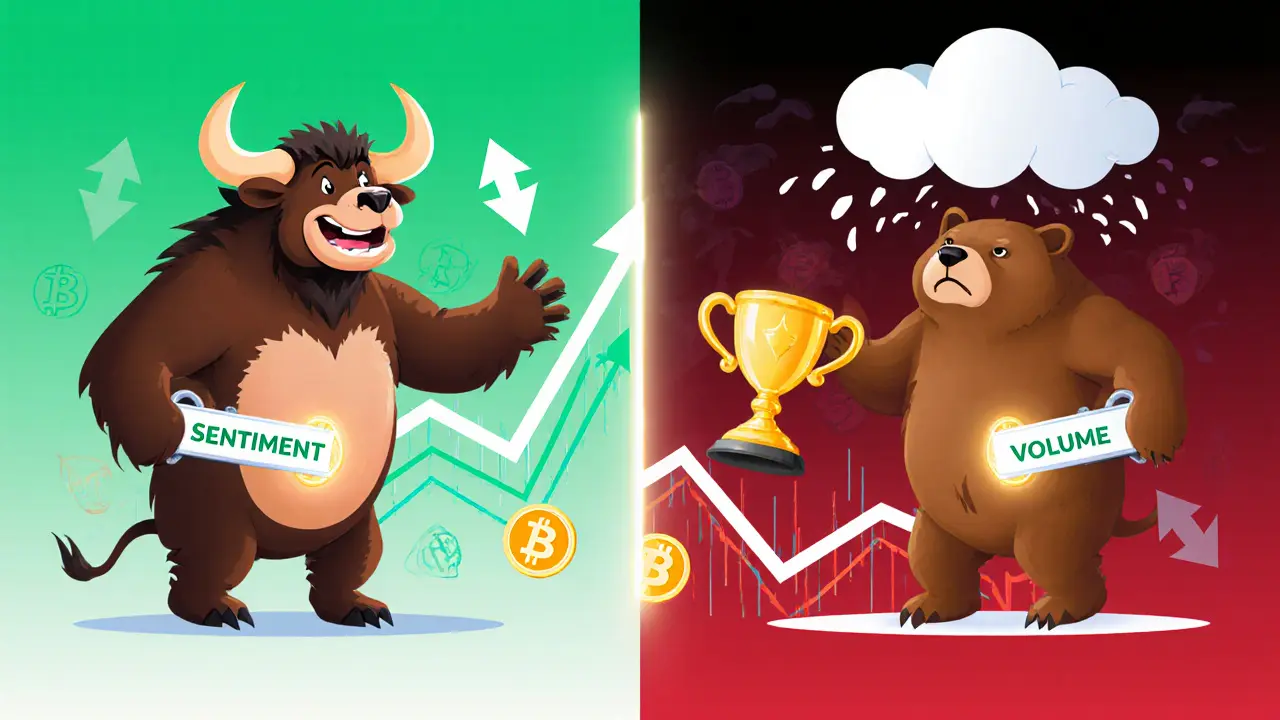When talking about Crypto Market Cycles, the repeating patterns of price movement, investor behavior, and market sentiment in the cryptocurrency space. Also known as digital asset cycles, it helps traders anticipate shifts and plan strategies. crypto market cycles aren’t magic—they’re observable stages that repeat over time. Recognizing them can turn a noisy market into a roadmap.
Each cycle typically moves through four phases: accumulation, markup, distribution, and markdown. In the accumulation stage, smart money quietly buys while prices stay flat. Then the markup rushes in as retail interest spikes, pushing prices up. Distribution follows, where early investors start selling into the hype. Finally, markdown sees prices fall back, resetting the stage for the next round. Crypto market cycles encompass these four phases, and understanding the flow lets you align your trades with the market’s rhythm rather than fighting it.
Bitcoin, the first and largest cryptocurrency, often seen as a bellwether for the broader crypto market. Also known as BTC, it drives major price trends across cycles. Because Bitcoin holds the biggest market cap, its own cycles often set the tempo for altcoins. When Bitcoin enters a strong markup, the whole market tends to follow, creating a ripple effect that lifts many tokens. Conversely, a Bitcoin markdown can choke liquidity and force a broader correction.
Altcoins usually mirror Bitcoin’s moves but with higher volatility. During Bitcoin’s markup, they can experience outsized gains, while during markdown they may crash harder. This relationship means that tracking Bitcoin’s cycle gives you a macro view, and then you can dive into specific altcoin charts for micro‑opportunities.
DeFi, Decentralized Finance projects that offer financial services without traditional intermediaries. Also known as Decentralized Finance, it adds liquidity and new use‑cases that can accelerate market phases. DeFi projects inject fresh capital and novel use‑cases, often sparking new markup phases. When a major DeFi protocol launches a token or a yield farm, it can create a mini‑cycle within the larger market cycle, pulling in investors looking for high yields. Watching DeFi launch calendars helps you spot these sub‑cycles early.
Market sentiment is the invisible hand that pushes cycles forward. Positive news—like regulatory clarity in India or new exchange listings—can shorten the accumulation phase and boost markup speed. Negative headlines—such as a crackdown in Egypt or tax changes in Australia—can extend distribution or trigger an early markdown. Sentiment indicators like on‑chain activity, social media buzz, and Google trends often give a real‑time pulse of where the cycle currently sits.
Technical tools blend nicely with cycle theory. On‑chain metrics (active addresses, transaction volume) show when accumulation is gathering strength. Moving averages and volume oscillators reveal when markup is gaining momentum or when distribution is starting. Combining these signals with the four‑phase framework creates a practical playbook: enter during accumulation, add on pullbacks in markup, trim during distribution, and stay out or hedge in markdown.
Now that you’ve got the basics of how crypto market cycles work, how Bitcoin and DeFi influence them, and why sentiment and technical tools matter, you’re ready to dive deeper. Below you’ll find a curated collection of articles that break down each element—from regulation impacts to yield farming guides—so you can apply these ideas to real‑world trading and investing.

Explore the differences between crypto bull and bear markets, learn how to spot each phase, and discover strategies to profit or protect your investments during these cycles.